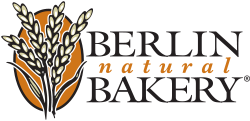Ah, GMOs. Most definitely a hot topic in our time and for good reason. There are two separate avenues when it comes to referring to hidden GMO ingredients - one deals with actual ingredients and the other deals more on a chemical level. This article will focus mainly on ingredients but we feel it is important to discuss hidden chemical components in GMO products because of the risk of allergic reactions.
What is Genetic Modification?
You may have heard the argument that genetic modification has been happening since the dawn of time. This argument states that farmers have been cross breeding crops for desired traits since the dawn of time so why is it such a big deal now?
The answer is that we're talking about two completely different processes. Crossing breeding between similar species of plants for desirable traits is what has been happening for thousands of years. The genetic modification (aka genetic engineering) happening in the last few decades is taking place in a laboratory at a cellular level. Genes are being manipulated, traded and inserted into crops in a way that could never be produced in nature.
Genetic Modification & New Allergens
In the 1990s, scientists tried to create a healthier soybean by inserting a gene from a brazil nut into it. For those of you highly or even deathly allergic to nuts - this kind of thing happening should alarm you especially since about 94% of soybeans are currently genetically modified according to GMOInside.org. Thankfully, these soybeans were tested on people who were sensitive to brazil nuts and those tests showed reactions to the soybeans which means that that specific GM soybean was never put on the market.
This kind of genetic modification poses a couple HUGE questions in regards to ingredient labeling. For instance, government agencies categorize genetically modified foods as the same as their non-genetically modified counter-parts. Since that is the case, would companies be required to label (for example) a "Soy/Soybeans containing Brazil Nuts" as containing Nut Allergens? Or would it simply be called Soy?
To take this even further, by genetically modifying a crop, scientists are literally altering its genetic makeup which means that they may (and probably do) act differently on a chemical/cellular level. For instance, there is a higher amount of a common soy allergen in GM soy vs. the non GM variety. So people who may not have reacted to a low level of it in non GMO soy, may now have an allergic reaction. Additionally, it is common for genetically modified foods to contain new protein structures uncommon in non-GMO versions. These new proteins may trigger immune responses in people - aka an allergic reaction.
There is still research being done on the safety of genetically modified foods - which to us is INSANE since according to The Non-GMO Project 80% of processed foods in North American contain GMOs. That is a staggering percentage and it certainly should give us pause, especially when making our way through a grocery store.
What Are Common GMO Ingredients in Bread?
Switching gears here, let's talk about common GMO ingredients you will find in a loaf of bread. One of the major GMO players is soy - as in soy flour, soy lecithin, and soybean oil. Soy lecithin is used for its ability to make bread dough easy to work with by making it less sticky. Soy flour has a bleaching affect on dough and it adds softness and volume to mass produced breads. And Soybean oil is used to extend shelf life, add flavor and make bread softer. Another GMO ingredient to look out for in bread is cornstarch which is sometimes used for its thickening ability and as a component for bleaching flour.
You should also watch out for corn oil, vegetable oil, cottonseed oil, dextrose and high fructose corn syrup as they are likely to be genetically modified. And even trickier are enzymes commonly added to dough to make processing easier or to help create a good crust. Many of them are made with the help of genetically modified microorganisms - not that you can find this anywhere on a label.
Why Are Hidden GMOs Used in Bread?
GMO ingredients are used in breads (as you read above) for a ton of different reasons - for bread to seem thicker, for dough to be easier to work with, to improve bread coloring, to add nutritional value etc - but the #1 main reason they are used all ties into the fact that most breads are massed produced.
Mass producing a bread means there is no room for error. The dough HAS to be easy to work with. The dough CANNOT be sticky when making its way through machinery. The bread HAS to be shelf stable and able to last for weeks after it is purchased. Above all else, it has to be consistent for mass producing to be possible.
It all comes down to the industrial revolution and our need to be better, faster and easier. Unfortunately, this value system may have some unintended consequences manifesting in the health of our nation and the rest of the world.
Could Hidden GMOs Be Making Us Sick?
Some people say yes, some say no, some say maybe and some say probably.
If you Google "GMOs Bad" and "GMOs good" and other variations, you will find hundreds upon hundreds of articles that fight boldly on both sides. You have one side saying 100% yes that GMOs are bad while their opponents simply call people scientifically uneducated or paranoid.
Although we don't claim to have the answers, we do take a stand when it comes to labeling GMOs. We believe that everyone should have the right to know if GMOs are in their food and be given the opportunity to choose for themselves whether they consume them or not.
GMOs have been in our food supply since the mid 1990s and there are studies coming out all the time that should give us cause for concern.
According to the American Academy of Environmental Medicine (an international organization that has been around since 1965), there have been several animal studies that show that consuming GMOs leads to an increased risk of "infertility, immune dysregulation, accelerated aging, dysregulation of genes associated with cholesterol synthesis, insulin regulation, cell signaling, and protein formation, and changes in the liver, kidney, spleen and gastrointestinal system." They go on to urge Physicians to educate their patients on GMOs, to recommend Non-GMO diets for all patients and to document their patients health changes if they cut out GMOs.
Anyone else find it interesting that an internationally known and respected organization comprised of Physicians would boldly urge their peers to keep an eye on GMOs and the role they may play on their patient's health?
GMOs may turn out to be perfectly healthy but until there are legitimate studies done on their safety - why not add a label to them so people can err on the side of caution? Maybe GMOs are the issue here but, maybe, like we've said all along, they simply play their part in the whole perfect storm that we find ourselves in today.
What Can You Do?
Stay up to date on current GMO issues and research that is coming out all of the time. Keep inspecting those ingredient panels and avoid questionable ingredients like soy, corn and cotton. When in doubt, find products with the Non-GMO Project Verified label.
If you find yourself stumped - feel free to ask your local health food store for help! We know that most natural health retailers are well informed and more than willing to answer their customers' questions. They are a valuable resource so don't be shy!
What to Know About Berlin Natural Bakery
We were actually the first bread line in the United States to become Non GMO Project Verified back in 2010. We joined the Non GMO Project because strongly believe that people deserve the right to know what is and isn't in their daily bread.
Remember, none of our breads are mass produced which means we do not have to manipulate our dough with GMO ingredients like other bread companies do. We only do small batch baking meaning we bake 100 loaves of bread at a time with ingredients that you and your grandparents recognize.
Stay Tuned!
Remember, hidden GMO ingredients are simply one piece of a complicated puzzle. The next article in this series is going to focus on the modernization of wheat - what's happened to it and why you need to care.
Sources:
http://www.nongmoshoppingguide.com/brands/invisible-gm-ingredients.html
https://www.organicconsumers.org/news/genetically-engineered-foods-may-cause-rising-food-allergies
http://www.motherjones.com/environment/2013/08/what-are-gmos-and-why-should-i-care
http://www.nongmoproject.org/learn-more/gmos-and-your-family/
http://www.huffingtonpost.com/amanda-greene/soy-lecithin-why-is-it-in_b_2891780.html
http://www.independent.co.uk/life-style/food-and-drink/features/the-shocking-truth-about-bread-413156.html
http://blog.fooducate.com/2010/11/04/the-top-20-ingredients-used-in-bread-miniseries-part-3/
http://recipes.howstuffworks.com/tools-and-techniques/cooking-with-cornstarch.htm
https://edubirdie.com/blog/new-scientific-studies-proving-gmos-can-be-harmful-to-human-health
http://www.gmo-compass.org/eng/grocery_shopping/processed_foods/28.gmos_bread_baked_goods.html
http://naturallysavvy.com/eat/scary-ingredients-used-in-bread-manufacturing







Comments
0 Comments